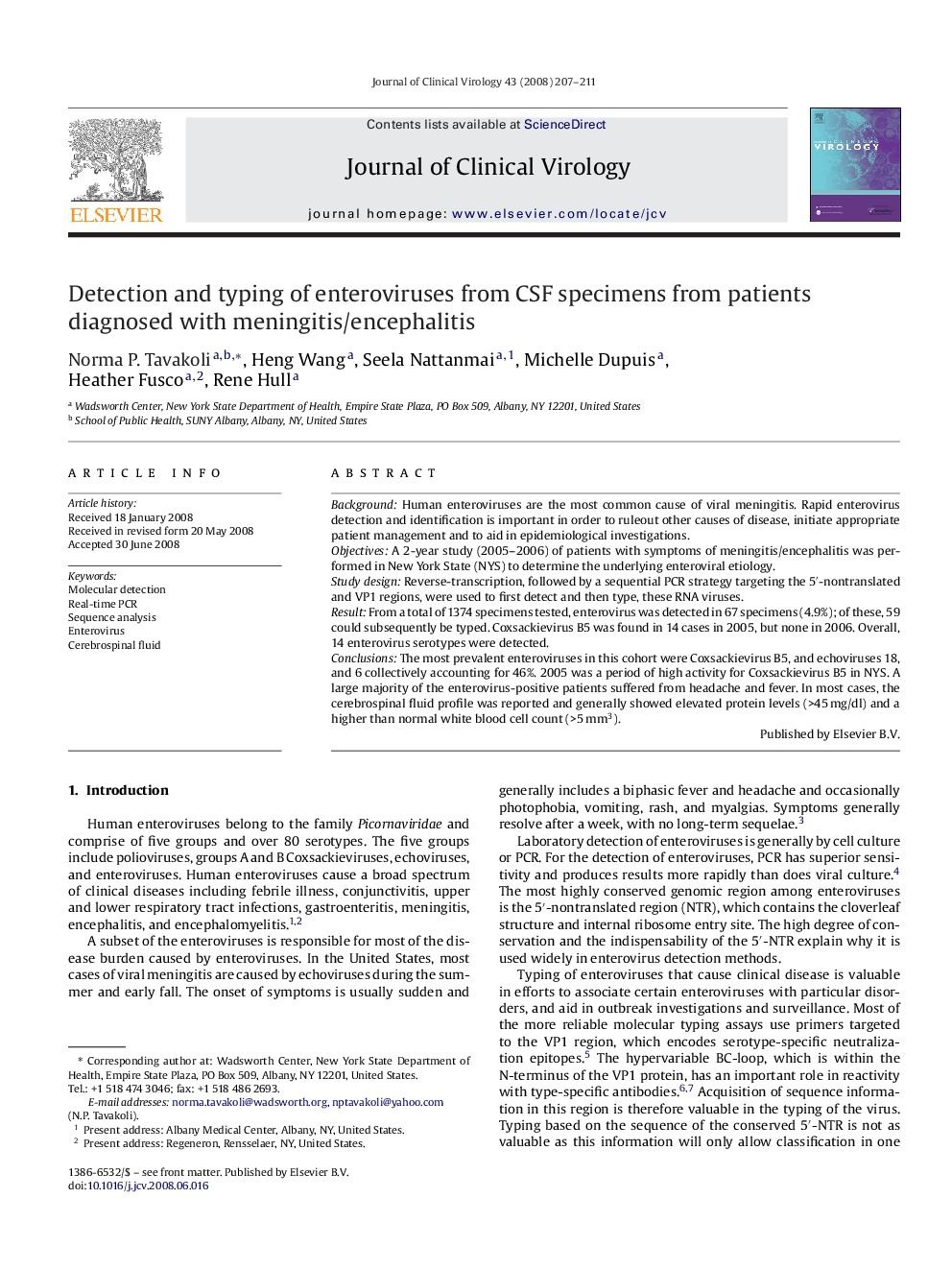| Article ID | Journal | Published Year | Pages | File Type |
|---|---|---|---|---|
| 3370547 | Journal of Clinical Virology | 2008 | 5 Pages |
BackgroundHuman enteroviruses are the most common cause of viral meningitis. Rapid enterovirus detection and identification is important in order to ruleout other causes of disease, initiate appropriate patient management and to aid in epidemiological investigations.ObjectivesA 2-year study (2005–2006) of patients with symptoms of meningitis/encephalitis was performed in New York State (NYS) to determine the underlying enteroviral etiology.Study designReverse-transcription, followed by a sequential PCR strategy targeting the 5′-nontranslated and VP1 regions, were used to first detect and then type, these RNA viruses.ResultFrom a total of 1374 specimens tested, enterovirus was detected in 67 specimens (4.9%); of these, 59 could subsequently be typed. Coxsackievirus B5 was found in 14 cases in 2005, but none in 2006. Overall, 14 enterovirus serotypes were detected.ConclusionsThe most prevalent enteroviruses in this cohort were Coxsackievirus B5, and echoviruses 18, and 6 collectively accounting for 46%. 2005 was a period of high activity for Coxsackievirus B5 in NYS. A large majority of the enterovirus-positive patients suffered from headache and fever. In most cases, the cerebrospinal fluid profile was reported and generally showed elevated protein levels (>45 mg/dl) and a higher than normal white blood cell count (>5 mm3).
